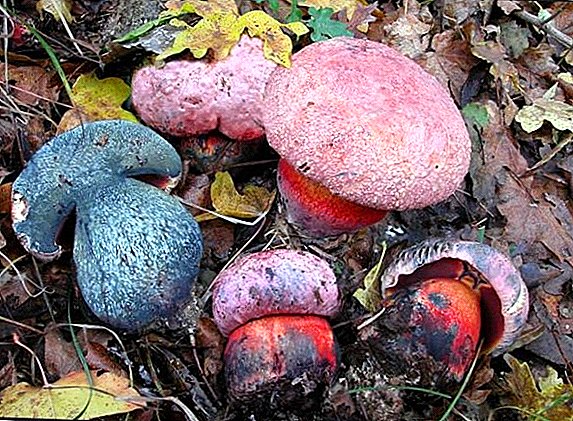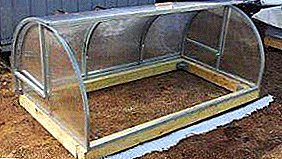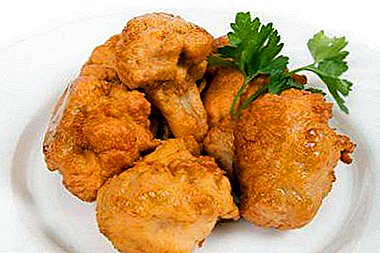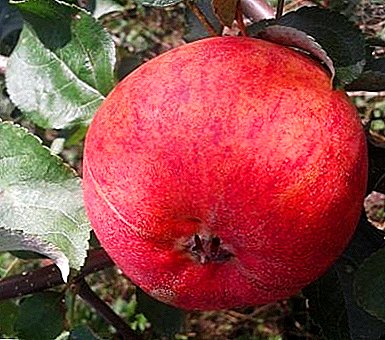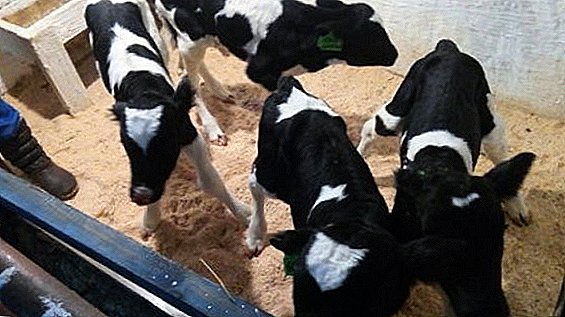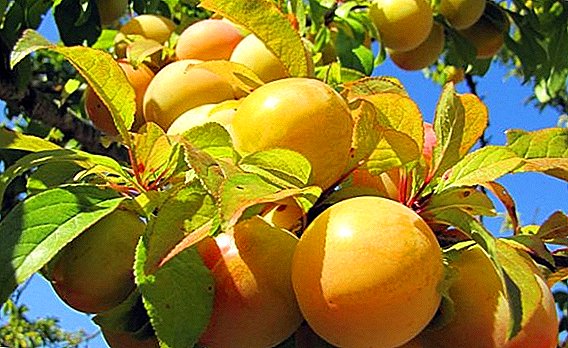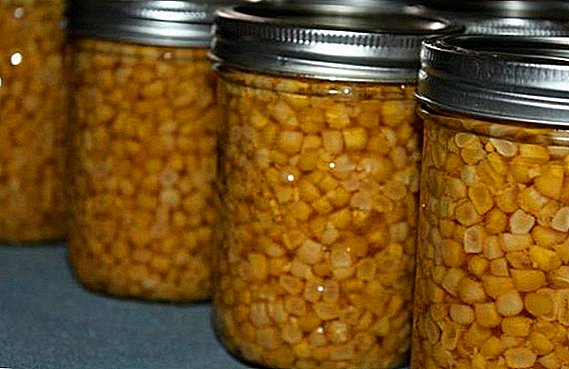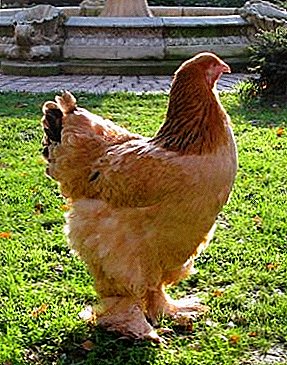 Viticulture is massively distributed in the southern and southwestern regions of Eurasia. The grapes are included in our regular fresh diet, processed into raisins, juice, jam, wine and other beverages. Grapes "Kuban" refers to table varieties, and feels good in the temperate climate zone. Therefore, novice growers living in temperate climates need to know the characteristics of the variety and its cultivation.
Viticulture is massively distributed in the southern and southwestern regions of Eurasia. The grapes are included in our regular fresh diet, processed into raisins, juice, jam, wine and other beverages. Grapes "Kuban" refers to table varieties, and feels good in the temperate climate zone. Therefore, novice growers living in temperate climates need to know the characteristics of the variety and its cultivation.
History of breeding and distribution of the variety
The Anapa Zonal Experimental Station of Viticulture and Winemaking during its work has created a number of well-established varieties: "Impulse", "Kadrinal", "Kuban", "Nadezhda Azos", "Type Khadzhibey", "Fantasy". The dark-blue “Kuban” and “Nadezhda Azos” table varieties were created at the beginning of the last century on the basis of the “Moldova” and “Cardinal” varieties.
Did you know? For the first time, grapes were cultivated in Asia in Iran and Afghanistan 9000 years ago. The Egyptians already knew how to get raisins and wine from it. And cultivate its various varieties began in ancient Rome.

The first vineyards in the Krasnodar Territory in the Anapa region were laid by General Pilenko in 1870. The general noticed that the climate of the region is very similar to the French province of Champagne. This meant that the conditions for growing grapes were very suitable. He brought to the region various varieties of French grapes (Sauvignon, Aligote, Chardonnay, Riesling) and agronomists who could provide the vineyards with proper care and ensure high yields.
In 1922, the AES was established in the region and work in the field of breeding was continued by the next generation of specialists. The new grape varieties obtained at the station were distinguished by good resistance to frosts and diseases, good taste qualities and a spectacular appearance of clusters.
Check out the most common grape varieties: "Buffet", "In Memory of Dombkovskaya", "Julian", "Cabernet Sauvignon", "Kishmish", "Ladies Fingers", "Nizina", "Gala", "Chardonnay" and "Girl".The larger the berries, the faster the grapes are sold on the market, and its price increases significantly. Berries varieties "Kuban" have a black and blue color, juicy and fleshy pulp. Their taste is sweet and slightly sour. The weight of each is from 10 g to 18 g. The weight of the bunch is 1-1.5 kg. These qualities make the variety in demand for cultivation in private farms in the post-Soviet space.

Grape variety "Kuban"
"Kuban" is a table variety of early maturity. In the south is ready for use at the end of August. For external resemblance to the variety "Arcadia", "Kuban" is sometimes called "Black Arcadia". The synonymous name of the variety found in literature is "Early Moldova".
Sprouts are planted at a distance of 2-3 m from each other, so that the stepchildren do not interfere with the neighboring bushes. The productivity of the bushes is high. The term of ripening is about 120 days. The ripened hands are not attacked by wasps.
One of the main features of the variety is the cluster size (up to 1.5 kg). Clusters are well transported and stored. When transporting the berries do not burst and do not crumble, they can maintain a marketable state for a long time. The variety is fairly easy to maintain, does not require specific conditions for quality growth. 
Bush and shoots
Shrubs of rapid growth power with abundant fruiting on the stepsons. The load on the bush 35-45 shoots. The bushes are characterized by a strong trunk and branches with light green leaves of medium size. It can well mature even with poor watering.
Did you know? Every nation has its own legend explaining the origin of grapes. A Persian legend has it that grapes were obtained from a wonderful bird rescued by a king from a snake. The pips were planted and yielded a harvest of grapes, from which juice was made.
Clusters and berries
The taste of the berries is rich, sweet and slightly sour. The sugar content of berries - 20%, acidity 5 g / l. The berries are very large, oval-egg-shaped, weighing from 10 g to 18 g. The flesh is juicy, fleshy with large bones. Tasting evaluation of ripened fruits - 8.3 points. The skin is thin, edible, aromatic. The variety has a high content of vitamin C. The average bunch weighs about 1 kg. The maximum weight of the brush reaches 1.5 kg. The bunch shape is friable, conical with an average density of berries. 
Specifications Grade
Shrubs fruit well, with fruitful shoots on a bush up to 60%. For large clusters of bushes need to be watered and fed well. It is recommended to leave in the spring on the bush 25-35 eyes, so as not to overload the vine. It tolerates frosts and snowy winters with air temperatures below -20 degrees. Pest resistance is medium. Despite the frost resistance, the variety must be covered for the winter in order to avoid freezing. Special inconveniences to uncovered bushes are delivered by thaws or rains with a sharp cooling, as a result of which frost forms. Therefore, shelter is necessary precisely to prevent the destruction of the kidneys by ice.
Planting grapes "Kuban"
Landing should be sunny. It must be remembered that grapes grow very poorly in the shade of trees. Bushes do not tolerate drafts and sharp cold winds. Therefore, for the landing choose the south side of the buildings. If the grapes are planted on the plot, then you need to choose a place on a hill. Excess moisture accumulates in the lowlands, which leads to rotting of the roots and makes planting in such places impractical.
Important! Planting in the winter is possible only for cold-resistant varieties that withstand temperatures of around -26 degrees and belong to unopen varieties. Only such a bush can survive the winter with a poorly developed root system.

Landing dates
Planting seedlings should be carried out from May to August. Spring planting helps the shoots to take root and adapt before the onset of winter. Autumn planting is used for adult bushes. Planting is carried out in the morning, 10 l of water is poured under each seedling. Mild sunny weather is more favorable for landing than any other. If the planting falls on a very hot time - then the plant will have to be watered more often, so that the soil does not dry out.
How to choose seedlings for planting
Vegetative seedlings are planted in open ground in May and August. However, they must have at least 5 roots about 10 cm long and 1-2 shoots about 20 cm long.
It is very important to provide the grapes with proper and thorough care. Check out the grape care features from spring to autumn.
How to choose and prepare a plot
When preparing the soil for planting, a set of measures to improve its quality is required. Dense soil needs dilution with sand, humus and compost. At the bottom of the trench or hole lay drainage, then pour fertile soil with humus and after planting the bush, fall asleep with the top layer of soil. 
Did you know? Roman legend says that Bachus, having found a vine, decided to plant it in his homeland. To shelter a plant from the scorching sun, he planted it in the bird's bone. During the journey, the find grew and Bacchus packed it into the bone of a lion, then into the bone of an ass. So now, when a person drinks one glass of wine - he sings like a bird, from two glasses becomes strong, like a lion, and from three glasses turns into a donkey.In areas overgrown with weeds, it is imperative to carry out the planned destruction of weeds (1.5-2 months before planting) in any way: chemical or mechanical. Before winter you can sow mustard on the site of the future vineyard, which inhibits weeds.
On the plain, rows are laid from north to south in order to provide good illumination of each shoot. On the slopes of the hills, rows are laid across the hill in order to better preserve the soil during the rains and the descent of snow. 
Seedling planting scheme
The width of the trench for planting is 1-2 m. The depth of planting bushes is 0.5 m. The distance between the seedlings is about 2 m. This distance gives each shoot the necessary amount of air and light.
Organic fertilizers are applied at the rate of 1 bucket per 1 sq.m. If the landing is done in the hole, then the diameter of the hole should be 0.8 m, the depth should not be less than 0.8 m. Before planting, 30-40 liters of water is poured under each bush.
Important! The distance from the vine to the nearest tree should be not less than 5 m. When planting near buildings, the holes should be made from the south side of the building at least 2 m from it.

Features of agrotechnology: how to care for a grade
"Kuban" is a sun-favorite variety and will develop well in sunny areas sheltered from the winds. For a stable harvest, the bush must be well watered and fertilized.
Mandatory water-recharge irrigation is carried out in the autumn, a few weeks before sheltering a bush for the winter. During the growing season watering is carried out as needed.
Watering and fertilizer
The main types of fertilizers when planting a vineyard:
- Organic: manure and comprost;
- mineral: superphosphate, potassium salt, wood ash;
- nitric - ammonium nitrate, urea, bird droppings.
To enrich the soil and nourish the plants, use organic fertilizers: straw, pigeon droppings, Florex granulated chicken droppings, bone meal, fish meal, whey, potato peel, compost, eggshell, banana peel fertilizer and tobacco dust.
 Fertilizers are applied to the bottom of the furrow. With a sufficient amount of moisture, fertilizers are applied before flowering, after flowering and before maturation. Be sure to apply organic fertilizer in the fall (10-15 kg per bush).
Fertilizers are applied to the bottom of the furrow. With a sufficient amount of moisture, fertilizers are applied before flowering, after flowering and before maturation. Be sure to apply organic fertilizer in the fall (10-15 kg per bush).Important! Organic fertilizers need to be applied once in 3 years. They will be more effective if you make them in the form of rotted.Watering is carried out from spring to autumn with the norm of 100-150 liters per square meter. This provides normal soil moisture and creates conditions for good fruiting.

Familiarize yourself with the advantages of using drip irrigation, as well as learn how to organize a system of drip irrigation at the dacha.
Pruning
Overwintered bushes after opening immediately tied to a support. Shoots are tied at regular intervals to provide good illumination and prevent infection by fungi. Fruit arrows tie horizontally.
In summer, barren stepchildren, which are formed in the leaf axils, are removed. For proper pruning it is necessary to know the structure of the grape bush. On the sleeves of the bush, annual vines of which substitute knots are formed develop. Shoots on knots of replacement are cut by 3-4 eyes, and 1-2 vines are left for fruiting on the sprouting sprout. In the autumn after leaf fall, pruning of the main part of shoots and treatment from pests is carried out. After that, the bush is covered for the winter. 
Protection from birds and wasps
Not all varieties are equally damaged by wasps. The variety "Kuban" is resistant to this factor (wasps do not attack it). To protect against insects (wasps, midges), bags of nylon or other mesh material, dressed on each bunch, are convenient in use. The disadvantage of this method for large vineyards is obvious - it is a physical impossibility to put on the required number of sacks. Therefore, in such cases different traps are used.
Did you know? Wasp jaws are not strong enough to bite berries, therefore wasps feed only on berries that have already been damaged. If there are such berries on the bunch, it will be easier to remove them and not to lure wasps.80% of damage is the activity of birds: sparrows, tits and other inhabitants of the fields. To protect against them, the trellis is recommended to cover the nylon fishing net. Cover should be when the berry enters the ripening phase (approximately 2 weeks before harvest). The net will protect the crop by 100%. In addition, it does not prevent the penetration of air and light.
 Bags for protection from insects and birds
Bags for protection from insects and birdsHow to harvest grapes and when
Harvest should be in sunny weather. The clusters must be dry. Therefore, if it rained, wait 1-2 days for the grapes to dry completely. The presence of moisture adversely affects the preservation, regardless of grade. Filmed grapes can not be left under the sun - the berry softens and this reduces their keeping quality. The clusters are cut by pruners. At the same time with one hand to support a bunch of the stalk. You can not hold a bunch of berries: a bunch can slip and be damaged. For stacking in boxes, select intact clusters, spoiled berries on them are cut off with scissors.
If you want your winemaking to bring the expected result, find out which grape varieties are suitable for wine.
How to shelter a bush for the winter
After trimming the bushes they are being prepared for shelter for the winter. The bush is tied with a twine for compactness and wrapped with film material. The base is covered with earth on top (layer of 7-10 cm). Film material protects the branches from pests and moisture, and the ground prevents freezing.
Knowing the simple rules of growing grapes, you can collect a good harvest annually for personal use and for sale. The main thing is to carefully approach all stages of the process, and then the result will surpass all expectations.
Video: Kuban grapes
Reviews from the network about the grape variety "Kuban"




